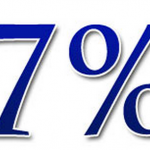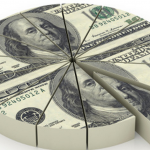Those of you who never experienced 18% money market rates most likely don’t have a first-hand sense of the vaunted stature Paul Volcker achieved during his service as Chairman of the U.S. Federal Reserve Board between 1979 and 1987. During his term, he managed to reverse a very scary period of exorbitant inflation (which reached as high as 15% during his term) and nurtured U.S. monetary policy in ways that helped foster (by 1987) the reduction of U.S. unemployment to an 8-year low of 5.7%! It is not hyperbole to tell you that by the time of the expiration of Volcker’s term as head of the Fed, many Wall Street leaders deeply feared the specter of “life without Volcker”. Volcker had managed to so deeply capture the respect and trust of both the business and investment communities that it seemed he was ready to be declared a demigod and permanently ensconced on the Wall Street version of Mount Olympus.
More recently, Volcker was persuaded to help advise (in 2008) an upstart Barack Obama on economic policy, and his influence upon recent bank regulation reform (banning proprietary trading at banks and restricting their investment in either private equity or hedge funds) was central enough to result in the regulation becoming popularly referred to as the “Volcker Rule”. That might lead one to think that Volcker has strayed far from his foundational “free market” roots. However, on May 29th (while receiving the “Second Economic Club of New York Award for Leadership Excellence” award) Volcker re-affirmed his free market roots through a fascinating speech that focused upon his understanding of the proper role of central banks – a view that is far afield from the activities currently engaged in by the Federal Reserve, the European Central Bank (ECB), the Bank of England (BOE), and the Bank of Japan (BOJ). I was quite struck by his open kibitzing of the current leaders of these powerful economic institutions — which one could liken to an ex-president (Bush, Clinton, or Carter) openly criticizing President Obama, as well as the leaders of the Eurozone, England, and Japan!
Volcker placed particular attention upon what he considers to be the folly of that which Ben Bernanke has dubbed “the dual mandate” of the Federal Reserve. In Volcker’s words: “It’s fashionable to talk about a dual mandate, that policy should somehow be directed toward two objectives, of price stability and full employment. Fashionable or not, I find that mandate both operationally confusing and ultimately illusory!” [1]
Take a second look at Volcker’s choice of words: “fashionable” (“conforming to the current style”, according to an online dictionary); “operationally confusing” (borne out, methinks, every time the market frets and stews over finely parsed language in Fed Minutes the day they are released); and “ultimately illusory” (“not real; based on an illusion; delusive”). Rarely has a public figure managed to exercise proper etiquette while (simultaneously) cutting those about whom he is talking “down at the knees”!
The policy to which Volcker refers is that announced on May 1st (by the Federal Open Market Committee (FOMC)) that it will decrease or increase the pace of its monthly bond purchases as dictated by changes in unemployment (their goal is 6.5%) and inflation (the goal is to avoid it moving over a longer-term pace of 2%). On that date, the FOMC reaffirmed its current monthly bond purchases of $85 billion.
Volcker clearly believes such a policy is a fool’s errand: “Asked to do too much, for instance to accommodate misguided fiscal policies, to deal with structural imbalances, to square continuously the hypothetical circles of stability, growth and full employment, then it will inevitably fall short.” According to Volcker, those efforts result in the central bank losing “sight of its basic responsibility for price stability, a matter that is within the range of its influence.” Obviously, in Volcker’s view, the fundamental mission of a central bank is to foster and ensure a “stable currency.”
Elaborating upon his thesis a bit more, Volcker declared: “The Federal Reserve, any central bank, should not be asked to do too much to undertake responsibilities that it cannot responsibly meet with its appropriately limited powers.” In this regard, Volcker came close to mocking any central banker who imagines she/he can manage inflation to achieve ancillary economic (or political) objectives: “The implicit assumption behind that siren call must be that the inflation rate can be manipulated to reach economic objectives. Up today, maybe a little more tomorrow, and then pulled back on command. Good luck with that. All experience demonstrates that inflation, when fairly and deliberately started, is hard to control and reverse.”
Those final words have taken on newly powerful relevance since May 22 (when Bernanke testified before Congress and Fed Minutes were released, resulting in confusion regarding future Fed policy and a high voltage increase in volatility).
GRAPH: the graph above shows the deterioration of three very interest-rate sensitive securities during May, especially following May 22, when the steepness of descent increased. The blue line is XLU (Utilities ETF); the light green line is MORT (mREIT ETF); and red is TLT (the ETF for 20 year US T-Bonds).
As dramatic as monetary easing has been in the U.S., it is exponentially more dramatic in Japan. Given the relative size of Japan’s economy vis-à-vis the United States, Japan’s monthly bond buying is actually 60% “larger” (more powerful) than that of the U.S.! In addition, the BOJ has been far less transparent than the FED regarding the timing of their bond purchases. That opacity has caused a bit more uncertainty and volatility in Japan than within the U.S. Take a look at this graph of the Nikkei 225 during May.
GRAPH: the graph above shows the dramatic upward whoosh of Japanese stock prices since January. But proving that “what goes up can come down”, the huge red bar at the far right reflects the “elevator drop” downward that struck the market on and after May 22nd! (Source: Tradingeconomics.com)
In theory, as the BOJ dominates the “demand side” of Japanese bond buying (thereby dramatically jacking up the “supply”), interest rates should move downward. However, theory and reality don’t always match. As the graph (below) of the yield on the (benchmark) 10-year Japanese Bond shows, rates have been moving upward.
Source: Trading economics.com
This is caused, in part, by the reality that Japanese lenders have realized that QE in Japan means that inflation is returning, motivating them to feel compelled to increase their lending rates. The graph (below) of the upward slope of Japanese import prices since the end of 2012 is a powerful indicator of the surging trajectory of import prices (and inevitable surge in CPI, etc. in future months).
Source: Trading economics.com
Because Japan is the world’s most heavily indebted nation (debt equals 214% of GDP), interest on the national; debt accounts for a whopping 25% of the annual budget. Therefore, as interest rates move upward as a result of QE, the budget will come under increasing stress – one of many permutations and complications of any central bank effort to achieve economic objectives beyond its prime goal of ensuring a stable currency.
For his part, Bernanke voiced a slightly different version of Volcker’s treatise on the realistic limits of central bank efficacy. When grilled by Congress on May 22 regarding why the U.S. economy is still so fragile, Bernanke pointed out that the Fed has been forced to fight far more than just the recession! It has had to overcome the headwind of ill-conceived Congressional policy as well: “In particular, the expiration of the payroll tax cut, the enactment of tax increases, the effects of the budget caps on discretionary spending, the onset of the sequestration, and the declines in defense spending for overseas military operations are expected, collectively, to exert a substantial drag on the economy this year.” That was a virtual admission by Bernanke that, as Volcker suggested, the Fed cannot be expected to handle the revitalization of the economy on its own!
As we can see in the graphs and material above, Volcker’s words are coming true right before our eyes. Unprecedented central bank monetary activities have unleashed forces that will be difficult for either the BOJ or Mr. Bernanke to manage effectively. That fact, according to Volcker, will diminish the positive impact of either bank, as well as expose the banks to significant reductions in the public’s perception of their work: “Credibility is an enormous asset. Once earned, it must not be frittered away by yielding to the notion that a little inflation right now is a good thing, a good thing to release animal spirits and to pep up investment.”
Hmmmm… “Animal spirits” indeed! We’ve seen plenty of those during the past few weeks. Only time will tell what the “end game” of this massive monetary easing policy (here and around the world) will be. I just hope my portfolio survives whatever comes – intact instead of tattered!
Submitted by Thomas Petty
Related Posts
Also on Market Tamer…
Follow Us on Facebook

 President Donald Trump Is Playing a Game of Chicken With the Federal Reserve. Who Will Blink First?
President Donald Trump Is Playing a Game of Chicken With the Federal Reserve. Who Will Blink First?



